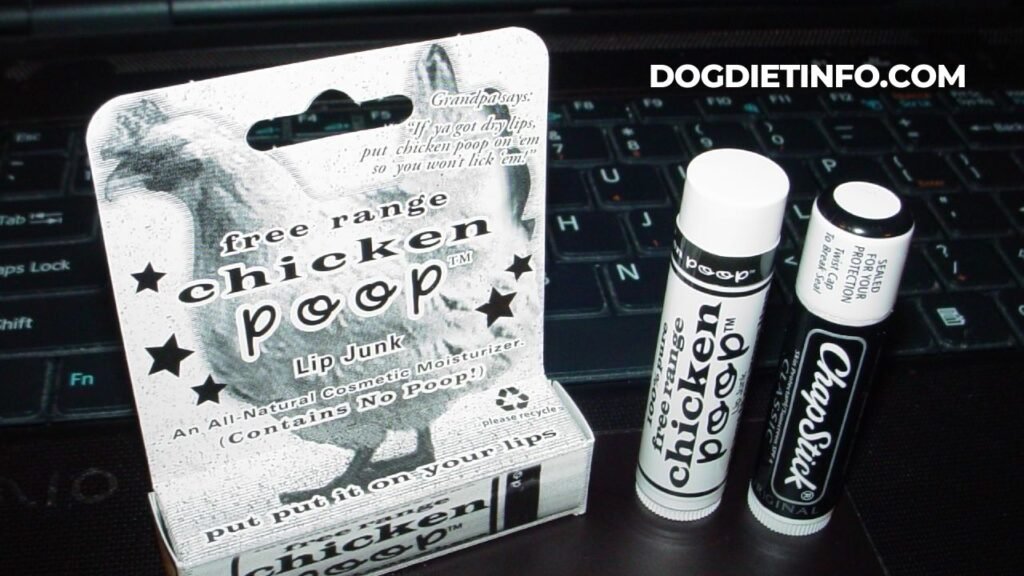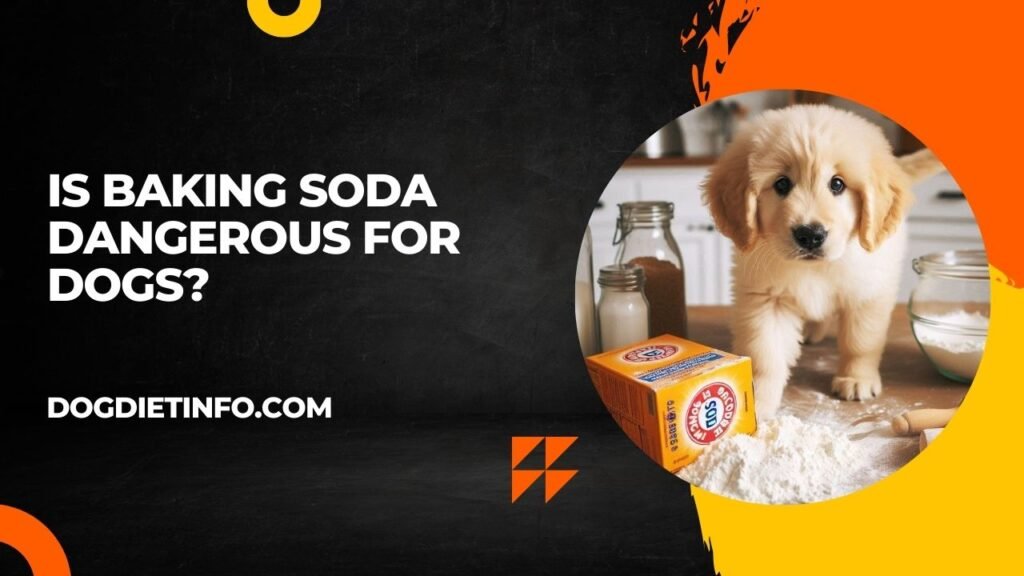Is Chapstick Bad For Dogs? Chapstick can be harmful to dogs if ingested, especially if it contains toxic ingredients like xylitol. It’s best to keep it out of their reach to avoid potential health issues.
As pet owners, we’re constantly vigilant about the products we use around our dogs, but sometimes the most ordinary household items can pose hidden risks.
Chapstick, a common lip balm, is one such product that may seem harmless but can be dangerous if your dog gets their paws on it.
Many dog owners wonder whether Chapstick is bad for dogs and what to do if their furry friend accidentally ingests it. [Is Chapstick Bad For Dogs?]
In this blog post, we’ll explore the ingredients in Chapstick, the potential risks of ingestion, and how to keep your dog safe.
We’ll also cover what to do if your dog eats Chapstick and answer frequently asked questions to ensure you’re well-equipped to handle this common concern.
Contents
What Is Chapstick?
Definition and Ingredients
Chapstick, as a brand, has become synonymous with lip balm, a product designed to moisturize and protect the lips.
Chapsticks are made with a variety of ingredients, depending on the specific type, but common components include:
- Beeswax: A natural substance produced by bees, often used as a thickening agent.
- Petroleum Jelly: A moisturizing agent that locks in moisture and protects the skin. [Is Chapstick Bad For Dogs?]
- Lanolin: A waxy substance derived from wool, used for its emollient properties.
- Essential Oils: Ingredients like peppermint or eucalyptus are often added for fragrance and cooling effects.
- Xylitol: A sugar alcohol used as a sweetener in some sugar-free varieties of Chapstick.
While many of these ingredients are safe for humans, some can pose significant health risks to dogs, particularly xylitol, which is highly toxic to them.
Even non-toxic ingredients can cause problems if ingested in large quantities or if the dog swallows the plastic tube. [Is Chapstick Bad For Dogs?]
Types of Chapstick
Chapsticks come in a wide variety of types, ranging from basic unflavored balms to those with added sun protection, flavor, or medication. Here are some common types of Chapstick:
- Standard Chapstick: The most basic type, which typically contains beeswax, petroleum jelly, and flavorings. [Is Chapstick Bad For Dogs?]
- Flavored Chapstick: These include artificial or natural flavorings, such as cherry, mint, or vanilla, which can be tempting to curious dogs.
- Medicated Chapstick: Includes ingredients like menthol, camphor, or phenol, which may be harmful to dogs.
- Sugar-Free Chapstick: Often contains xylitol, which is extremely toxic to dogs and can cause severe health problems.
No matter the type, it’s crucial to be aware of the ingredients and to keep all Chapsticks out of your dog’s reach. [Is Chapstick Bad For Dogs?]
Is Chapstick Bad for Dogs?
Toxic Ingredients in Chapstick
The ingredients in Chapstick can determine how harmful it is to dogs. While some ingredients are relatively benign, others can be toxic. Here’s a breakdown of the primary ingredients to watch out for:
- Xylitol: This is the most dangerous ingredient commonly found in some sugar-free Chapsticks. Xylitol can cause a rapid insulin release in dogs, leading to hypoglycemia (low blood sugar). Ingesting even small amounts can be fatal if not treated quickly. Symptoms of xylitol poisoning include vomiting, weakness, tremors, and seizures.
- Menthol and Camphor: Found in medicated Chapsticks, these ingredients can cause gastrointestinal upset and irritation if ingested. In larger amounts, they may lead to more serious complications like central nervous system depression.
- Essential Oils: Ingredients like eucalyptus or peppermint oil can be toxic to dogs when ingested, causing symptoms like vomiting, drooling, and difficulty breathing. [Is Chapstick Bad For Dogs?]
- Petroleum Jelly: While not toxic in small amounts, petroleum jelly can cause digestive upset, leading to diarrhea or vomiting if ingested in large quantities. Additionally, ingesting the plastic tube can lead to gastrointestinal blockages, which may require surgery to remove.
Potential Health Risks
The risks of Chapstick ingestion depend on the type and quantity ingested, as well as the size of the dog. Smaller dogs are more susceptible to severe reactions due to their lower body weight. Here are some potential health risks:
- Gastrointestinal Upset: Even if the Chapstick doesn’t contain toxic ingredients, ingesting it can cause nausea, vomiting, diarrhea, and abdominal discomfort. The waxy texture and ingredients may not digest well, leading to further complications.
- Hypoglycemia and Liver Failure: If the Chapstick contains xylitol, hypoglycemia can develop rapidly, within 10-30 minutes of ingestion. Without immediate treatment, this can lead to seizures, liver failure, or death. [Is Chapstick Bad For Dogs?]
- Gastrointestinal Blockage: If your dog swallows the Chapstick tube, this can cause a blockage in their intestines, which may require surgical intervention to resolve. Symptoms of a blockage include vomiting, lethargy, loss of appetite, and difficulty passing stools.

What To Do If Your Dog Eats Chapstick
Immediate Actions
If you discover that your dog has ingested Chapstick, here are the immediate steps you should take:
- Check the Ingredients: Look at the packaging of the Chapstick to identify any toxic ingredients, particularly xylitol. If you’re unsure or can’t find the ingredients list, contact your vet or a pet poison control hotline.
- Monitor for Symptoms: Keep a close eye on your dog for any signs of distress, such as vomiting, drooling, lethargy, or seizures. If your dog exhibits any of these symptoms, seek veterinary attention immediately.
- Contact a Veterinarian: If the Chapstick contains harmful ingredients like xylitol, menthol, or essential oils, call your veterinarian right away. They may recommend bringing your dog in for treatment or instruct you to induce vomiting at home.
Possible Treatments
If your dog has ingested Chapstick, especially one containing xylitol or other harmful substances, your veterinarian may suggest the following treatments:
- Inducing Vomiting: If the ingestion is recent, your vet may induce vomiting to remove the Chapstick from your dog’s stomach before it’s absorbed. This should only be done under veterinary supervision.
- Activated Charcoal: In some cases, vets may administer activated charcoal to bind any toxins and prevent further absorption into the bloodstream. [Is Chapstick Bad For Dogs?]
- Intravenous Fluids: If xylitol poisoning is suspected, your dog may require intravenous fluids to stabilize their blood sugar levels and prevent dehydration.
- Surgery: If your dog has ingested the plastic Chapstick tube and it’s causing a blockage, surgery may be needed to remove it.
Preventing Chapstick Ingestion
Storage and Safety Tips
Prevention is always better than cure. To avoid the stress and potential harm of your dog ingesting Chapstick, follow these preventive measures:
- Keep Chapstick Out of Reach: Store Chapstick in secure locations like a drawer or high shelf where your dog cannot access it. Dogs are known for their curiosity, so avoid leaving Chapstick lying around on tables, in bags, or in easily accessible pockets.
- Dispose of Empty Tubes Properly: Even empty Chapstick tubes can be attractive to dogs due to the residual scent. Make sure to dispose of empty tubes in a sealed trash can.
- Use Pet-Safe Products: If you’re frequently around your dog while applying lip balm, consider using a pet-safe, non-toxic lip balm to minimize the risk.
By taking these precautions, you can significantly reduce the likelihood of your dog ingesting Chapstick. [Is Chapstick Bad For Dogs?]
See Also: Is Chalk Toxic For Dogs? Learn the Facts
FAQs
Can a small amount of Chapstick hurt my dog?
Yes, even a small amount of Chapstick can be harmful, especially if it contains toxic ingredients like xylitol. Always check the ingredients list and monitor your dog for any symptoms if they ingest Chapstick.
Is beeswax in Chapstick harmful to dogs?
Beeswax itself is not considered toxic to dogs, but it can cause digestive issues if consumed in large amounts. Additionally, if your dog ingests the Chapstick tube along with the beeswax, it may lead to a gastrointestinal blockage.
How long after ingestion do symptoms appear?
If the Chapstick contains xylitol, symptoms can appear within 10 to 30 minutes of ingestion. Other symptoms, such as vomiting or diarrhea, may take a few hours to develop, depending on the ingredients and how much was ingested.
Can natural or organic Chapstick be safe for dogs?
Even natural or organic Chapstick can contain ingredients like essential oils or menthol that may be harmful to dogs. Always check the label and avoid leaving any type of Chapstick where your dog can reach it.
Should I induce vomiting if my dog eats Chapstick?
You should only induce vomiting if directed to do so by a veterinarian. In some cases, inducing vomiting can cause more harm than good, particularly if your dog has ingested plastic or toxic substances like xylitol.
Conclusion: Is Chapstick Bad For Dogs
Chapstick may be a simple product we use daily, but it can pose serious risks to dogs, especially if it contains toxic ingredients like xylitol or essential oils.
Even if your dog ingests a non-toxic variety, the plastic tube can cause gastrointestinal blockages, leading to further complications. [Is Chapstick Bad For Dogs?]
The key to preventing accidental ingestion is vigilance. Always store Chapstick and other personal care products out of your dog’s reach, and take quick action if your dog happens to eat any.
By understanding the risks and knowing what steps to take, you can protect your dog from potential harm and keep them healthy and safe.

Derrick Wilcox is a certified canine behaviorist with over 12 years of experience at Happy Paws Animal Clinic and Pawsitive Training Center, helping pet owners ensure safer, healthier, and happier lives for their dogs.



